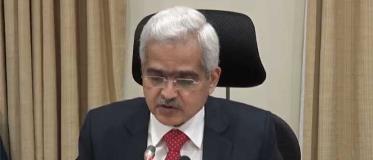RBI Cuts Rates; Reiterates Dovish Stance


The rate cut by the RBI was never really in question even ahead of the policy announcement. The debate was more about whether the monetary policy committee would adopt a conservative 25 bps cut or go for a more aggressive 50 bps rate cut. The conditions for an aggressive rate cut were certainly there. GDP growth had plummeted and IIP is well below the previous year’s run. Global trade wars are also taking its toll on growth and domestic consumption has been under pressure; especially after the NBFC crisis. Finally, the Monetary Policy Committee (MPC) opted for a compromise rate cut of 35 bps; which would be large enough to charge the economy bulls but conservative enough to keep the hawks happy. Above all, the 35 bps rate cut marked the first departure from the 25 bps formula.
What are the key features of the Monetary Policy announcement?
Apart from cutting rates, the MPC also underlined its accommodative stance indicating that the RBI continues to remain dovish. That is largely in line with what the global central banks have been thinking. Here are the highlights.
- The repo rate was cut by 35 bps to 5.40%, a clear compromise between the bulls and the hawks.
Consequently, we have the reverse repo rate at 5.15%, while the bank rate and the Marginal Standing Facility (MSF) rate are at 5.65%. - When calculated from the levels of June 2018, this marks a net rate reduction of 60 bps after factoring in two rate hikes in the previous year.
- More importantly, the MPC underscored its monetary stance as accommodative; indicating that it would be open to further rate cuts if data was supportive.
- Liquidity situation remained comfortable through the June-July period on drawdown of excess CRR by banks and OMOs by the RBI.
- Four out of six members voted for a 35 bps rate cut, while two voted for a 25 bps cut.
- The tone remains dovish which is indicated by the fact that the vote for continuation of the accommodative stance was unanimous among the 6 members of the MPC.
Why 35 bps rate was a good compromise solution for the RBI?
One thing the MPC has consistently highlighted in its credit policy statement is the conflicting signals emerging from the macroeconomic indicators. While auto and tractor sales have been distinctly weaker, the passenger air traffic data has seen a rebound after 3 months of contraction. Similarly, steel and cement have seen contraction but the PMI services spurted to 53.8 (above 50 is expansionary) on fresh export orders.
Clearly, the MPC has some inflation concerns at this point of time. For the months of June and July, the monsoons were 6% below the long period average (LPA), although this has picked up and been largely compensated in August. However, the MPC has expressed concerns that the sowing season may have been delayed. For example, the total area sown under Kharif cultivation was lower by 6.6% in June and July. Considering abundant rainfall in August, the RBI has actually taken a chance with 35 bps rate cut to enthuse the economy and also to keep room for more cuts if inflation warrants.
Reforms in the policy go much beyond rates and liquidity
There are a series of fresh measures that have been announced and in some cases past announcements have been built upon. Here are some samplers.
- RBI plans to introduce the stripping/reconstitution facility for state development loans (SDLs) to make them more liquid.
- There is good news on digital transfers as the NEFT facility will be made available round-the-clock from Dec-19 and this will include all banking holidays.
- In a significant move, the RBI has proposed the creation of a central payments fraud information registry (CPFIR) and will share such information with participants for better credit decisions.
- Risk weightage on consumer credit to be reduced from 125% to just 100% except for credit card outstanding.
- To give a boost to NBFCs, maximum bank exposure to single NBFCs raised from 15% to 20% of Tier-1 capital, giving banks more leeway.
- Targeted lending by banks to non banking finance companies (NBFCs) for agricultural and micro credit to be directly classified as priority sector lending.
To get a clearer picture on the discussions, we will have to wait for the minutes of the MPC discussions which will be published on August 21st. A whole lot of items are work-in-progress in this policy and the emerging stance should be clear in the next policy to be announced on October 04th.
Start Investing in 5 mins*
Rs. 20 Flat Per Order | 0% Brokerage
